
Mug shot of alleged Manistique lawbreaker, Paul Bunyan?
Wright E. Clarke, editor of the Schoolcraft County Pioneer, often lamented Manistique’s undeserved reputation as a center of lawlessness. Nevertheless, word had spread across the peninsula that the growing village of Manistique was the 1880’s equivalent of Sodom and Gomorrah. Seeking the truth, the Marquette Mining Journal sent an investigative reporter to Manistique to ascertain the facts:
“Manistique, May 10, 1884—Manistique having been advertised far and near as a community given over to lawlessness and deeds of violence, and the major portion of its citizens as banded together for the perpetration of all the crimes against which laws have been ordained by powers both human and divine—a place to be shunned and a people to be feared—a representative of the MINING JOURNAL visited the village last week to learn, if possible, what the attraction is that called so many ‘dogs of Hades’ to one spot.
The evening of the third day finds him weary, fearful and trembling in the most extensively maligned town in Michigan. With cringing attitude and furtive eye he dismounts from the golden war-chariot that carried him thither, and with many a propitiatory nod to all he encountered, he wended his way to the inn, and finally arrived there, amazed and delighted that he was still able to enquire (editorially) with the lamented Watts, ‘and are we wretches still alive?’ [This refers to a hymn by Isaac Watts.]
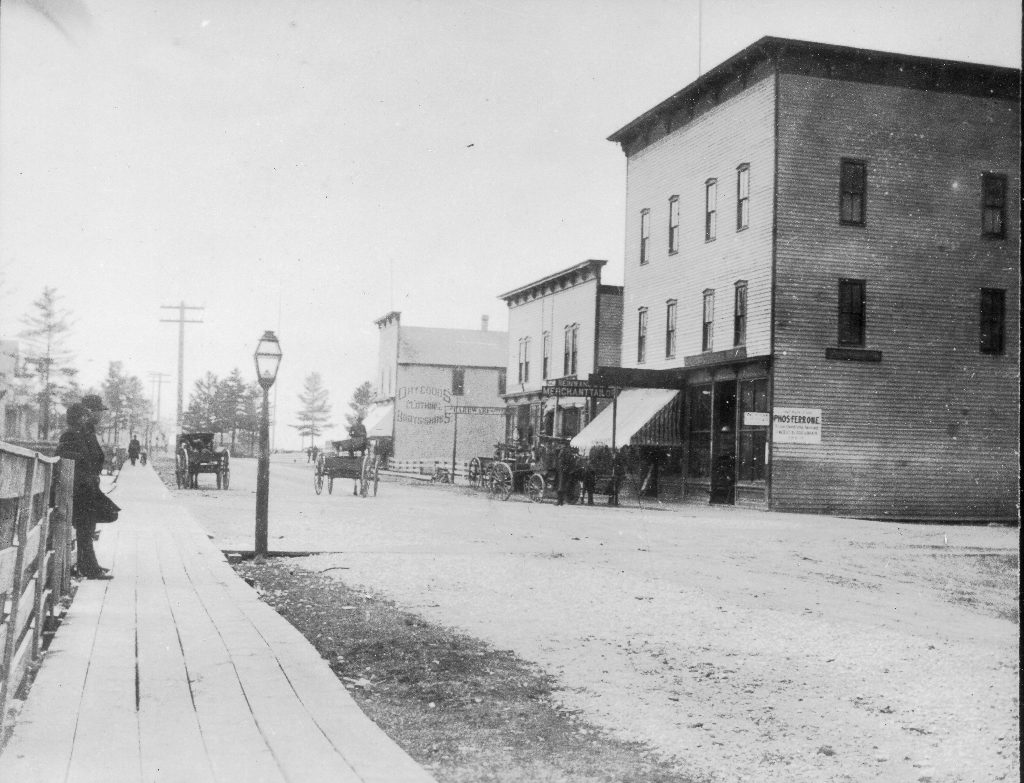
Pictured above is an 1880’s view of a seemingly peaceful scene on Cedar Street. SCHS Photo
The degree of intelligence and morals of a community may generally be fairly judged by the hotel it supports. There is a lake in New Hampshire that is burdened with a name very much like the one sustained by the Manistique hotel, and that is about as near as the writer can come to tell what the name is, but as there is no geography at hand he cannot spell it. [Ossawinamakee]
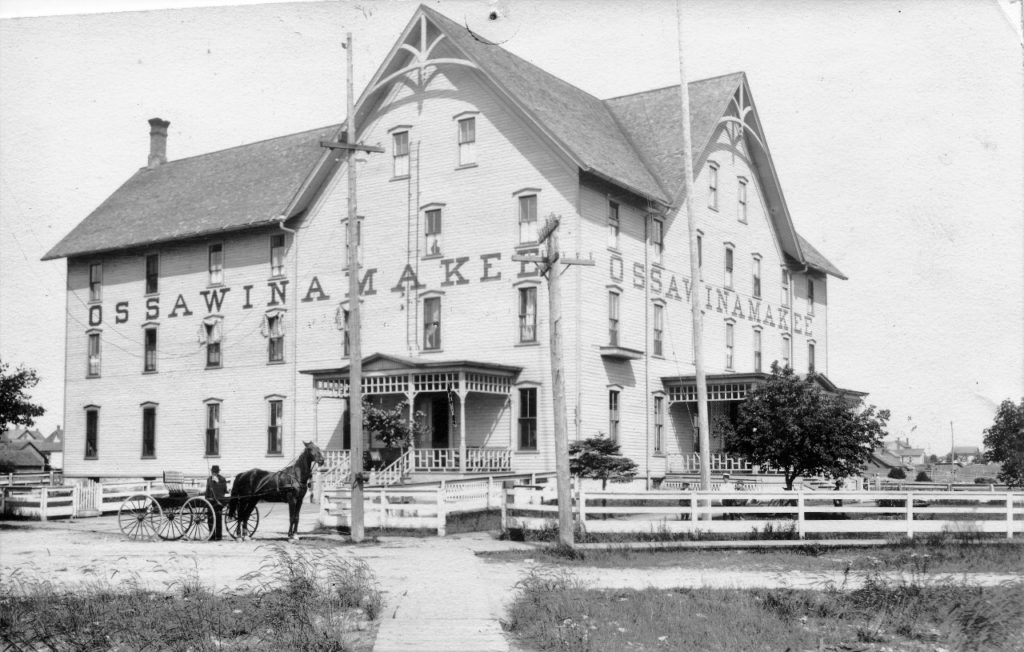
The Ossawinamakee Hotel opened its doors in 1883. (SCHS)
It’s a good long Indian name, and if the Indians have a bible the name was undoubtedly taken from one of the genealogical chapters. The hotel is new, fitted with modern conveniences, and admirably managed. It is large enough to accommodate the guests, and clean enough to satisfy the most fastidious one of the lot. It was built by, and is the property of the Chicago Lumbering Company.
The next morning it was raining hard, and somehow or another, towns in general have a faculty of looking cold and inhospitable to a stranger, if viewed between the slanting streams of an energetic storm. Doors are closed, and if perchance a face appears at the window (which sometimes happens in Manistique) to gaze at the bedraggled stranger, curiosity rather than sympathy is the emotion that prompts the inspection.
Manistique is built on either side of the river whose name it bears, and so far as the spectacular effect of its site is concerned, but little can be said. That part of the town lying near the river is low and not particularly dry.
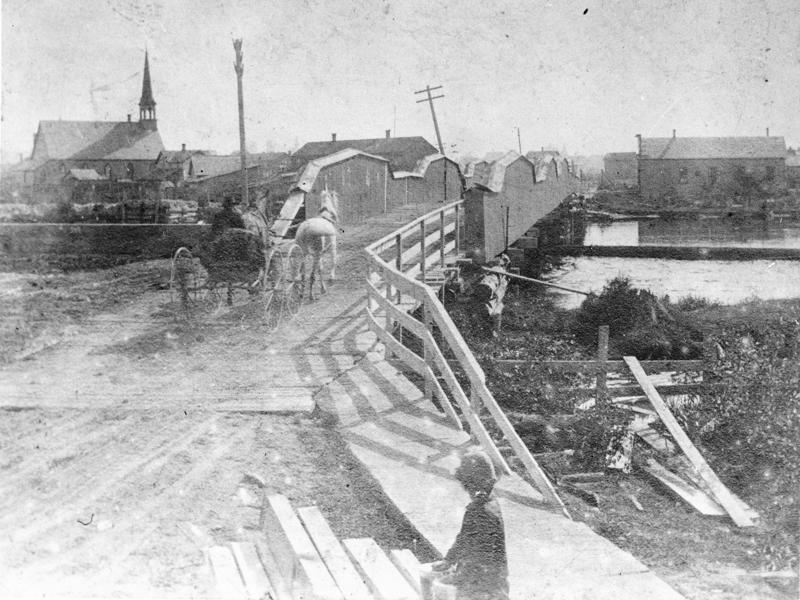
This wooden bridge was in use during the 1870’s and 80’s. It was the first “permanent” structure to cross the Manistique River. SCHS Photo
On the east side and back from the river 500 yards, the land is high and the majority of the dwelling houses are in this quarter. Most of these are cottages built by the company for its employees; they are of uniform size, are neatly painted, and cost about $550 each. The occupants are charged $50 per year rent, and the same houses in Marquette would readily bring a hundred dollars more.
Many of the dwelling houses owned by the company and other residents are large, and there seems to be a universal admiration for paint. Almost every building in the town is well painted, and, either by accident or design, different colors have been used, so that the ghastly uniformity of color, so noticeable in other towns owned in main by a corporation, is happily absent.
There are three religious denominations represented by resident pastors, the Catholic, Baptist and Methodist. The Baptists have a fine church edifice now and the others probably cherish the hope that the time is not far distant when they will erect finer. There are three clergymen in the field and they will undoubtedly see to it that the interests of Zion do not languish.
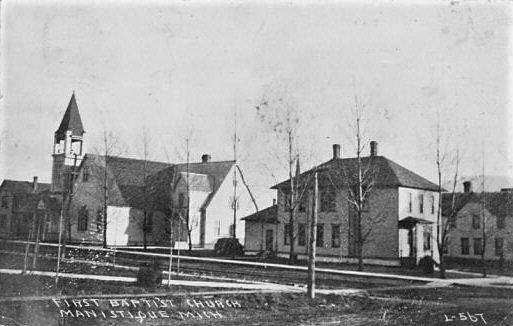
The First Baptist was dedicated in October of 1883. It was the first church building in the village. The above image is of the church and parsonage as it appeared in 1914.
The school building is a nice, substantial, two-story structure, handsomely painted and furnished, and is situated in one of the pleasant quarters of the town. The school is divided into three compartments, and, according to the testimony of all its patrons, is making a splendid record for itself.
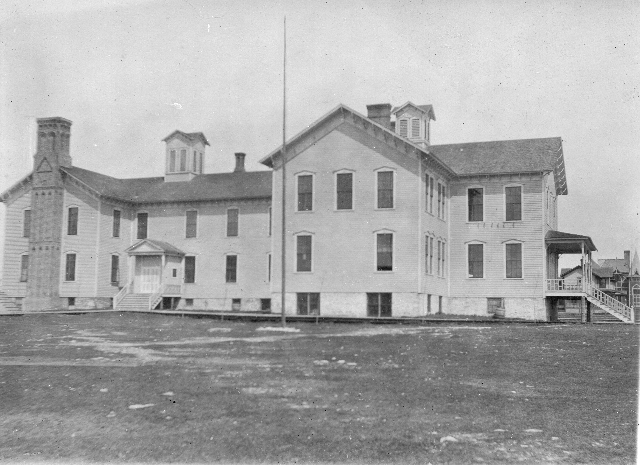
The Central School building was erected in 1882 with an initial enrollment of 76 students. It was located near where the current high school is today.
Prof. Weed, the principal, is not only an educated man, but a man of sense, and his assistants, Mrs. Field and Miss Watson, work in perfect harmony with him.
Very little time is spent in governing the school, as the question of government seldom arises. The citizens are all public spirited enough to pay their schoolteachers. The teachers’ calling is even considered respectable.
After acquainting itself fully with the facts, the MINING JOURNAL moves for a reversal of the popular verdict upon the place. A quiet, orderly and industrious community is what our reporter found there, instead of an aggregation of law-defying ‘hell hounds.’ Prosperous business enterprises, good schools, comfortable homes, etc. are the rule, and but one saloon to do the ‘ruin act.’
What was all this row about, anyway? Let justice be done!”
